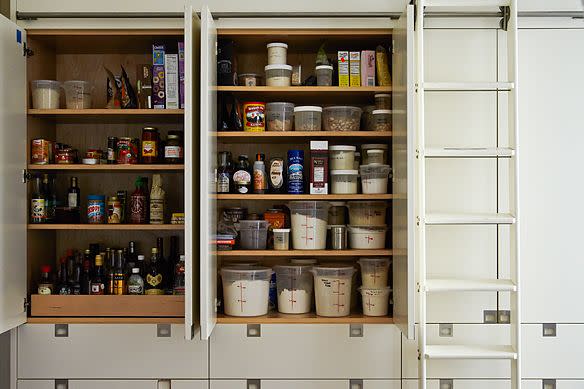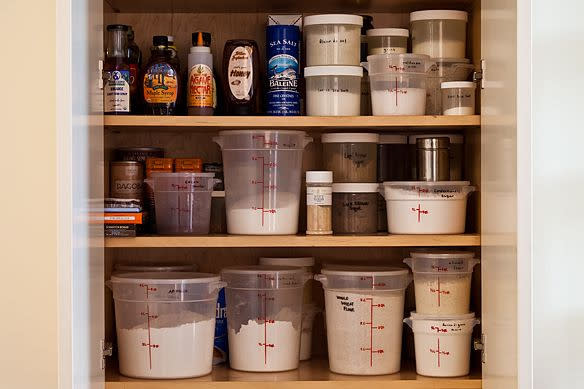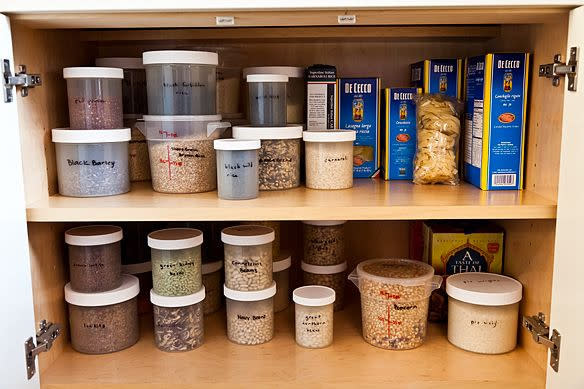How to Make Your Pantry Make Sense
Inspired by conversations on the FOOD52 Hotline, we're sharing tips and tricks in our Kitchen Confidence column that make navigating all of our kitchens easier and more fun. Today, we're sharing our tips for keeping an organized pantry.
Amanda's pantry didn't always look like this. After years of recipe testing, ingredients piled up. Every time we removed an item, someone had to play a real-life game of Tetris to put it back so the cabinets would close properly. Obviously, this wasn't the most efficient way to keep a test kitchen pantry. At some point Amanda asked if anyone could organize our chaos and create a system for maintaining it. After a messy day, and many heavy trash bags full of things past their prime, FOOD52 achieved pantry zen.
>>RELATED: See our tips for what to store in your pantry and on your counter.
Want your kitchen to resemble ours? It's easier than you think. I know we don't all have spaces like this (my own kitchen is severely lacking in cabinet and drawer space), but there are basic tips that apply to all kitchens, and that's what I'm sharing here.
Keep like with like.
Before the big cleanup, sugars, salts, flours and other sweeteners were all mixed up. (The horror!) I dedicated one shelf to flours, one to sugars and chocolates, and the other to salts and sweeteners. Now everyone knows exactly where to look for the chickpea flour, maple sugar or agave nectar.
>>RELATED: See our tips for what to store in your refrigerator and freezer.
Consider what you use, and how often you use it.
The items on the eye-level shelves are things we use most frequently. This makes gathering ingredients convenient, so think about what you use and place it accordingly. I have a space up at the top for refills (like the extra boxes of brown sugar) and things we just don't use very often (like applewood chips).
Use food-grade airtight containers.
Airtight containers are best for storing dry ingredients. Since nothing can spill out from them, they keep your shelves free of stray grains or dustings of flour. The added bonus is that you can choose different sizes for different ingredients. And doesn't a pantry full of uniform containers look better than one with half-empy bags and boxes?
>>RELATED: See our tips for Building a Smarter Grocery List.
Label (and date) things.
We can't tell the difference between AP flour and pastry flour without a label. And I certainly couldn't identify every type of rice we have. Amanda keeps a wet-erase marker on hand for easy labelmaking -- when the black barley is gone, the name on the container will just wash away. You don't have to label every single ingredient in your pantry if you don't want to. I am encouraging you to date things, though. Knowing how fresh your pantry items are is always a good thing.
Keep track.
This one's easy: stay familiar with what you have on your shelves to avoid bringing home any duplicates. When you run out of an essential, add it to your weekly grocery list.
What are your pantry organization tips?
Want more Kitchen Confidence? Check out how to make a perfect poached egg, how to cook the perfect medium rare steak, and how to make whisk-free whipped cream.
Photos by James Ransom




